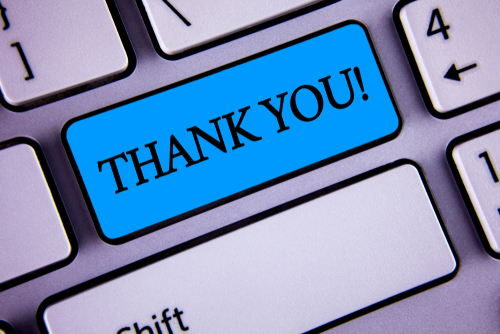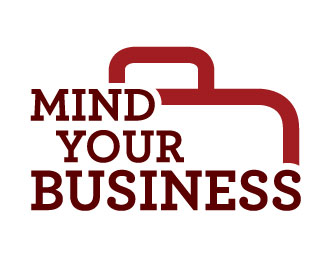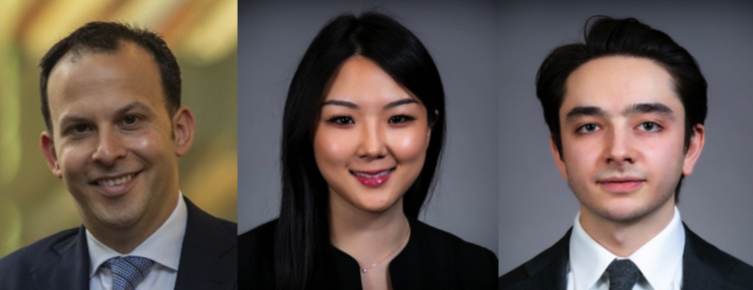Thanks for nothing: When should lawyers end an email with 'thank you'?

Image from Shutterstock.com.
Writing a professional email is difficult enough. And choosing an appropriate signoff can be daunting, with so many options to choose from: “Thank you” (or just “Thanks”), “Sincerely,” “Best,” “Regards,” “Yours” or nothing at all (as in, “—Jon”). The list goes on.
Articles try to help, including the Huffington Post’s recent piece, “This Is the Best Way to End a Work Email, According to Etiquette Experts” or the Forbes list of “57 Ways to Sign Off an Email.” One author claims to have unearthed the deeper meaning of email signoffs in her piece called “What Your Email Signoff Is Really Saying.”
“Thank you” (or “Thanks” or “Thx”) seems to be the most popular signoff among email senders. Some writers include it reflexively. But when is “Thank you” an appropriate signoff?
Some advocate for the “Thank you”: versions of this ubiquitous signoff—“Thanks in advance,” “Thanks” and “Thank you”—ranked as the top three email closings with the highest response rates, according to Boomerang’s 2017 survey. And Mashable ranked “Thanks” as the second best option, explaining that “every email signoff should be a thank you” because “someone took the time to read your email, which was probably too long.” Others find it presumptuous: Victoria Turk, the author of Digital Etiquette told HuffPost, “You don’t thank someone before they’ve agreed to something,” calling the practice “passive-aggressive.”
We don’t take such a bright-line approach. Instead, to bridge the divide, we propose five principles—or factors—to help you decide whether to “thank” your email reader: (1) professionalism; (2) tone; (3) purpose; (4) situation; and (5) custom. Let’s dig a bit deeper into each of these ideas before we show them in action.

First, maintaining professionalism is key in business and legal emails. (All bets are off in personal emails.) When writing to a client, supervisor, colleague, vendor or subordinate, thanking the reader for their time can be polite. And the professionalism principle urges the sender, when in doubt, to err on the side of “Thank you.”
Second, the intended tone of an email will affect the decision whether to express gratitude. For example, do you want to be charming or demanding? “Thanks in advance” can be vile, depending on context. But a sincere “Thank you” has its place at the end of a thoughtful request. Similarly, a bare “Thanks”—followed by a period—may seem cold or even rude, though some may see it as exuding confidence and authority. Tone, therefore, overlaps with purpose and context, the third and fourth considerations.
Third, what is the purpose of your email? If you need a quick response, you might risk presumptuousness and “thank” the recipient as a strategy of compulsion. But this is a dangerous game. While saying “thank you” could induce a response, it might backfire, making the reader feel cornered. In other words, you might get a fast—but resentful—response. Alternatively, a reader may deserve “Thanks” for her time reading your lengthy informational email. The hope is to make the reader feel good, encouraging them to respond and open your future emails.
Fourth, context is crucial. Consider your relationship with your reader and the subject of your email. Are you sharing good news in an office memo or asking your boss for a raise? Perhaps you are telling your client that she lost her case. Knowing your recipient’s preferences can also help you decide. For example, if your reader always signs off with “Thank you,” perhaps returning the favor is safe.
 Michael Zuckerman, Jamie Hwang and Connor Cohen.
Michael Zuckerman, Jamie Hwang and Connor Cohen.
Finally, some are not functional but customary. We might say “thank you” when we really mean “please” or “you’re welcome.” These uses may not survive strict scrutiny or common sense, but they are staples of email culture. And for that reason, like a soft form of stare decisis, we may stick close to them, so we don’t needlessly rock the boat or breach various email norms that may exist in certain organizations, communities or relationships.
With these principles in mind, consider the following hypotheticals.
Letter #1: A law school student emails a professor she has never met before
Dear Professor West,
My name is Rafaella. I am reaching out to ask if there are prerequisites I need to sign up for your class. Also, will you be offering the class again next fall?
[Thank you,] Rafaella
This “Thank you” is polite and proactive, though potentially ambiguous. Is Rafaella thanking Professor West for reading the email or for the response she anticipates? Since the professor has to respond to Rafaella (or at least, the email asks for a response), Rafaella’s gratitude is not presumptuous. It seems appropriate.
Other variations of “Thank you” might do, but an extended phrase like “Thank you for your time” seems clumsy and stuffy in an email like this. “Thank you” is also effective because it can encourage a response, and it shows deference to the faculty member. So it works.
Letter #2: A first-year associate writes to a partner to request clarification
Dear Patricia,
I am working on the new assignment. Would you like me to find more case law on each element of negligence? Or just the ones you focused on during our meeting?
[Thank you,] Dante
“Thank you” is a safe bet here. Initially, it is formal and polite: Patricia is the boss, and Dante wants to show respect. While Dante could be thanking Patricia for any number of things—such as the opportunity to work on the new assignment or the answer to his question—a general “thank you” suffices.
It acknowledges that Patricia’s time is valuable. Dante also wants to nudge a response, and “Thank you” could help. Subconsciously, Patricia may feel more inclined to send emails to a guy like Dante, who always seems glad to be working with her. “All the best” would be OK, too, but “Thank you” feels right.
Letter #3: An associate responds to another associate in her class about a project
Hi Mark,
Here is all the precedent I could find on whether animals can sue for copyright infringement.
[Thanks,] Gina
“Thanks” here is a close call. Gina seems to be helping Mark, and since Gina and Mark are co-workers, there is no need for Gina to be overly formal. Nor is Gina requesting any particular response. So this may be a reflexive “Thanks”—meaning, a “thanks” for nothing, but one that senders often include.
On the other hand, Gina could be expressing gratitude that Mark is reading her email. Or perhaps Gina is glad for the opportunity to work with Mark. But if politeness or context demanded a “Thanks” in this email, Gina should have put it up front. Ultimately, while “Thanks” may not be inappropriate here, other signoffs, like “Best,” seem more natural.
Letter #4: A lawyer emails a client
Hi Marcy,
It was our pleasure representing you in your recent book deal. We look forward to working with you again. Enclosed, please find our final invoice for this matter, which we’d ask that you pay within 30 days. Please contact me directly if you have any questions.
[Thank you,] Jimmy
This example may be trickier. Not only do we enter the attorney-client relationship, but the email (as many do) mixes multiple topics here—the book deal and the billing. To the extent Jimmy is thanking Marcy for her business, “Thank you” is of course appropriate. But Jimmy already effectively thanked Marcy for her business in the beginning of his email.
If Jimmy instead is preemptively thanking Marcy for paying her bill, then the signoff may seem pushy. In crafting an appropriate signoff, Jimmy should be deliberate about what he is trying to accomplish. He should also consider his relationship with Marcy. Although Jimmy can get away with this “Thank you,” he might consider clarifying what he’s thankful for in the body of the email.
In the end, reasonable minds may differ about how to end an email, as these hypotheticals highlight. Though personal preference weighs heavily here, the factors we describe above should, too. There is a fine line between a polite “Thank you” and a “Thanks” for nothing. One thing, however, is for certain: While email etiquette continues to evolve, “Thank you” isn’t going anywhere. By thinking about why you are ending an email with a “Thank you,” you will maximize your chances of using it well.
Michael Zuckerman is a lawyer who teaches communication and legal reasoning at the Northwestern University Pritzker School of Law. Zuckerman previously practiced law at Jones Day and clerked for several federal judges. He earned his undergraduate and law degrees from Cornell University.
Jamie Hwang is a 2L at the Northwestern University Pritzker School of Law and a member of the Northwestern University Law Review. She graduated from the Medill School of Journalism at Northwestern University, where she received her bachelor’s degree in journalism. Hwang’s previous works have appeared in the ABA Journal, the Huffington Post and Chicago Magazine.
Connor Cohen is a 2L at the Northwestern University Pritzker School of Law and a member of the Northwestern University Law Review. He graduated from the University of North Carolina School of the Arts, where he received his bachelor’s degree in dance.
Mind Your Business is a series of columns written by lawyers, legal professionals and others within the legal industry. The purpose of these columns is to offer practical guidance for attorneys on how to run their practices, provide information about the latest trends in legal technology, and how it can help lawyers work more efficiently, and strategies for building a thriving business.
Interested in contributing a column? Send a query to [email protected].



